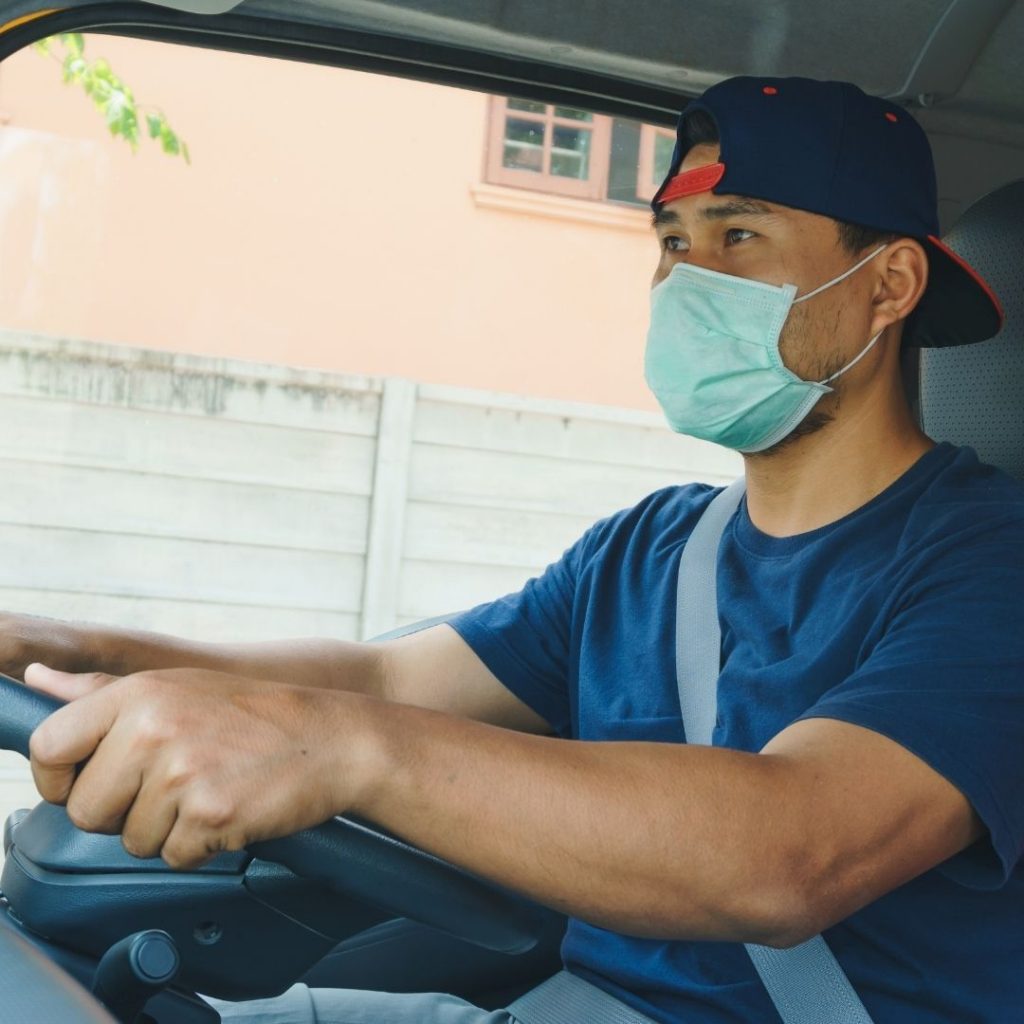All drivers need to use proper personal protective equipment during the pandemic. Here’s how.
There’s no question it feels like everything changed in 2020. One thing that hasn’t changed is the need for safe work procedures. Remaining safe as a professional driver goes beyond the basics of driving the vehicle. You are still required to follow safe working procedures and you still need to prepare your vehicle and cargo for travel, as always. But add to that the need to use personal protective equipment (PPE).
Safe working procedures have always included using PPE—protective gear worn to protect the wearer from injury or infection. Typically, it includes respirators, gloves, protection for head, eyes, and feet, and possibly aprons or even body suits. COVID-19 has added non-medical face masks and hand sanitizer to the category of PPE. By law, each worker must use PPE in the workplace when it is required. Each employer is responsible for educating workers about which PPE is needed and how to use it as well as how to maintain it.
As a professional driver, you may not need to use all types of PPE or use it as often as some, but having it available during each run can ensure you’re prepared. When it comes to dealing with COVID-19, no one can afford to be lazy or sloppy. COVID-19 is no joke; you don’t want to be sidelined for weeks, months—or forever—because you caught it. Drivers must wear a non-medical face mask each time they exit their cab and when they are unable to maintain a distance of at least 2 meters (6 feet) from other people. The best practice is to do both—wear a mask and keep your distance.
As a commercial truck driver, you may be exposed to the virus when you are near truck stop attendants, store workers, other truck drivers, and dock workers. You can’t know for sure if you’ve touched something that someone with the virus just touched, possibly putting you at risk if you touch your face. Regularly sanitizing or washing your hands is a must.
Additional precautions include:
• limiting any time spent outside of the truck cab during fueling, loading, and unloading, and at any rest and truck stops.
• making an appointment for unloading cargo.
• using the truck radio or your phone to speak with dock managers or other drivers when possible.
• packing your own food, water, and supplies to limit the number of stops you need to make.
• using truck stops, motels, or hotels recommended by your employer that are confirmed as following COVID-19 protocols.
Be careful and stay safe by using your PPE.
